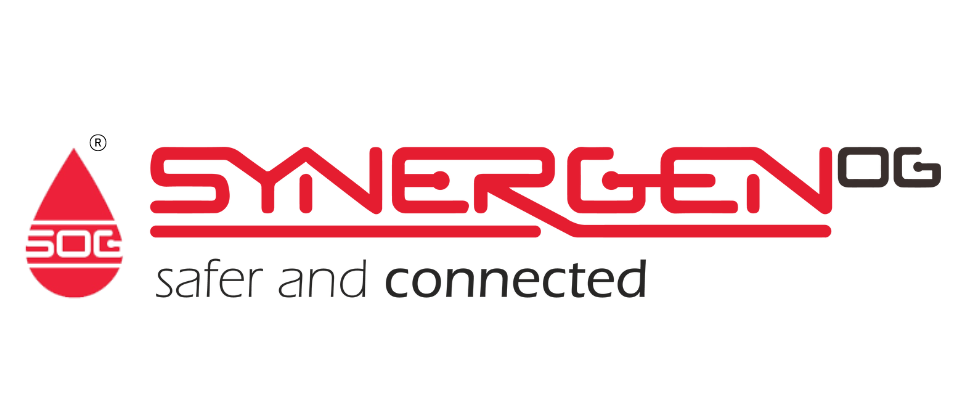| Summary: Some of the recent oil, gas, LNG, and chemical incidents highlight how weak hazard identification can escalate into major losses. Investigations reveal recurring gaps: underestimated process deviations, overlooked human–machine interactions, and poor recognition of cascading failures. Missed barriers—such as inadequate relief systems, flawed alarm management, and incomplete safeguards—left operations vulnerable. Root causes often trace back to rushed or superficial process hazard analyses. The key insight is clear: solid, scenario-driven HAZID is not a compliance exercise but a frontline defense. Embedding rigor, multidisciplinary input, and continuous review could have prevented many of these costly, high-profile events. |
In recent years, several high-impact events in oil & gas, LNG (methane), and chemicals show a recurring pattern: inadequate hazard identification (HAZID/HAZOP/PHA) for credible scenarios (e.g., extreme flooding, transient operations, dead-legs, abnormal modes) led to missed safeguards and catastrophic escalation. Strengthening HAZID quality—especially for non-routine modes, external hazards, and degraded states—could have interrupted these accident pathways.
Drawing on documented incidents and systemic investigations, this article highlights key lessons to drive safer operations across the industry.
Why HAZID Still Fails— and How Disasters Keep Happening
Great safety programs still suffer blind spots. The top reasons we see in recent investigations:
- Transient states ignored (startup, shutdown, idle, purging, isolation, maintenance).
- Abnormal operating modes not modeled (valves/fittings left mis-positioned, lines isolated, cryogenic reversal).
- Aging/temporary configurations (dead-legs, temporary piping, bypasses) not captured in PHAs.
- PSM boundaries/exemptions (e.g., atmospheric tanks) that sidestep formal PHA rigor.
- Knowledge not translated into safeguards (hazards “known” locally but missing in protective layers or procedures)
- Lack of bowtie or LOPA studies to assess controls and escalation factors.
- External/NaTech hazards underplayed (e.g., flood levels beyond “design” experience)
Read: How to do a thorough Hazard Identification Study
Each pattern above specified appears clearly in the cases below.
Recent Process Safety Incidents that lack proper HAZID
1) Husky (now Cenovus) Superior Refinery, Wisconsin (Apr 26, 2018) — FCC Transient Explosions → Asphalt Tank Puncture & Fires

What happened: During a planned shutdown of the fluid catalytic cracking (FCC) unit, two vessels exploded. Shrapnel punctured an asphalt tank, causing large fires and community evacuation.
Where HAZID fell short: CSB’s final report highlights inadequate safeguards for shutdown/purging (transient operations). Failing to fully define and enforce barriers like steam purges and air exclusion allowed an explosion that should have been prevented by efficient shutdown procedures and engineered interlocks verified in PHA.
What HAZID should have caught:
- Transient-state hazards in FCC shutdown (air ingress, combustible mixtures, sequencing).
- Verification steps (proof testing, interlocks, isolation plans) were specifically reviewed in PHA/HAZOP for turnaround modes.
Core insight: Non-routine modes demand the same—or higher—PHA rigor as steady state. Build checklists, permits, and interlocks specifically for shutdown/startup.
2) Intercontinental Terminals Company (ITC) Deer Park, Texas (Mar 17–20, 2019) — Tank-Farm Fire Escalation

What happened: A tank in a large terminal released and ignited, causing the fire to spread across 15 tanks over three days, resulting in major damage and prolonged air quality impacts.
Where HAZID fell short: CSB emphasized that regulatory exemptions (OSHA PSM and EPA RMP for certain atmospheric tanks) limited the formal application of PHA/PSM elements; as a result, hazard identification and safeguards that might have limited escalation were not required/implemented to the same standard.
What HAZID should have caught:
- Escalation potential in shared containment, common utilities, and foam/water supply limits.
- Isolation strategies and remote-operable valves for rapid product cut-off to a burning tank.
- Firewater/foam pre-planning and critical equipment survivability.
Core Insight: Even if PSM “doesn’t apply,” a risk-based HAZID should. Apply PHA rigor to tank farms due to domino effects.
3) TPC Group, Port Neches, Texas (Nov 27, 2019) — Explosions & Long-Duration Fires
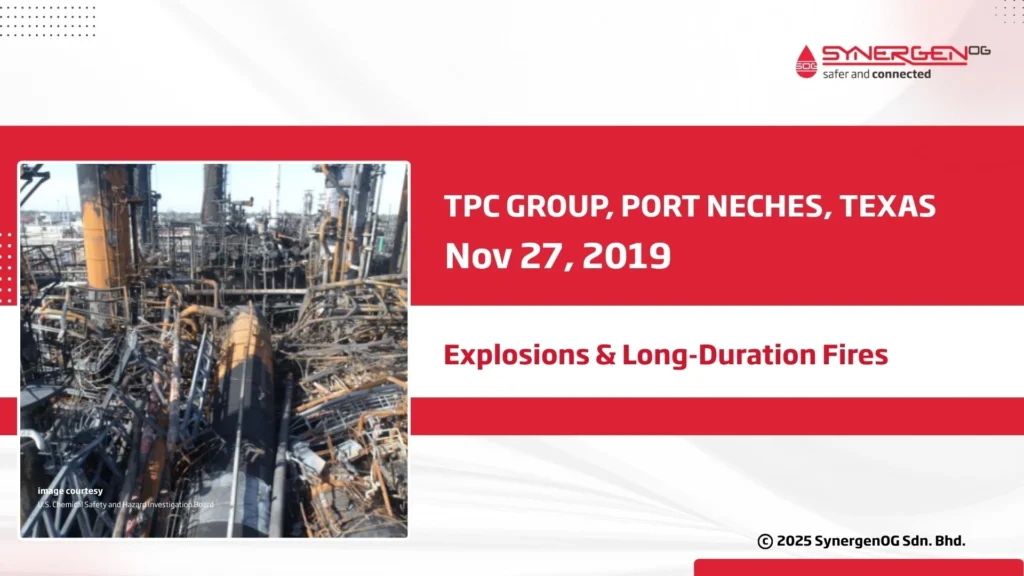
What happened: A serious explosion and subsequent fires in a butadiene production unit triggered large-scale community impacts.
Where HAZID fell short: CSB’s report flags dead-leg identification and control as deficient; the unit’s procedure did not identify all temporary dead-legs, including the one that failed, allowing popcorn polymer to accumulate and cause rupture. This is a classic HAZID miss: temporary/hidden inventories weren’t systematically identified and safeguarded.
What HAZID should have caught:
- Temporary and infrequently used sections (blind legs, bypasses, spool pieces).
- Polymerization hazards in butadiene systems with strict inspection/flush plans for every potential dead-leg.
- Management of change (MOC) for temporary configurations feeding back into the PHA.
Core Insight: Your HAZID is incomplete if it doesn’t map every potential stagnant volume and specify surveillance or elimination strategies.
4) Arkema, Crosby, Texas (Aug 31, 2017) — Flooding → Loss of Cooling → Peroxide Decomposition & Fires
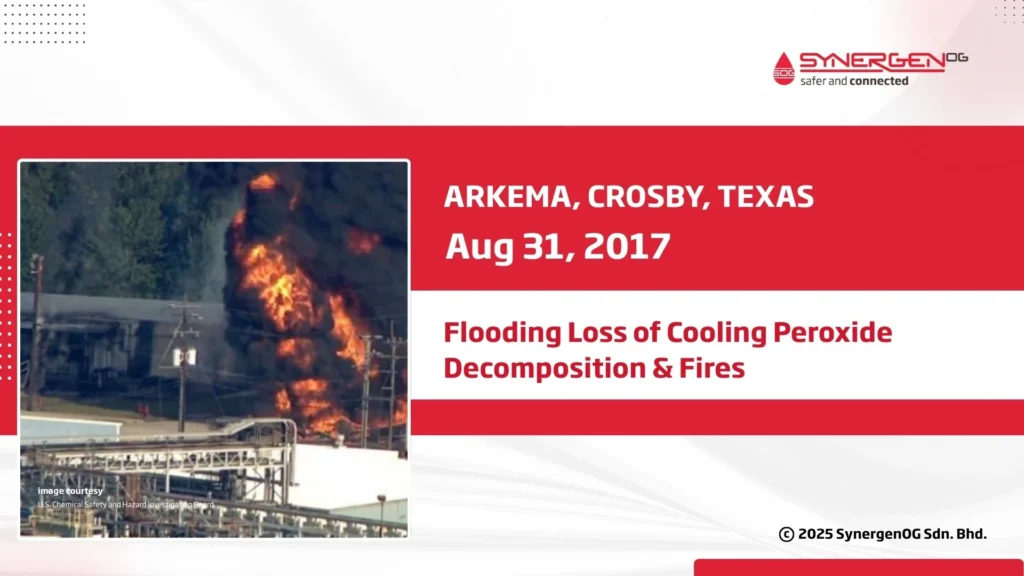
What happened: Hurricane Harvey floodwaters disabled refrigeration at a peroxide storage site. Without cooling, organic peroxides decomposed, leading to fires and off-site impacts.
Where HAZID fell short: The CSB’s report and executive summary show extreme flooding was not adequately captured in risk assessments and protective design; the site’s PHA and emergency planning did not fully account for flood depths that actually occurred, contributing to the loss of critical barriers (power, backup cooling, access).
What HAZID should have caught:
- NaTech (natural-hazard triggered) flood scenarios exceeding historic records.
- Loss-of-cooling progression to energetic decomposition, with siting/layout checks for elevated/ flood-resilient backup systems.
- Emergency access & segregation so firefighting and evacuation aren’t compromised by water.
Core-Insight: Treat low-frequency, high-consequence external hazards as credible and specify elevated, redundant, and testable backup cooling/power.
5) Chesapeake (Daniel H. Wendland 1-H), Burleson County, Texas (Jan 29, 2020) — Fatal Workover Blowout
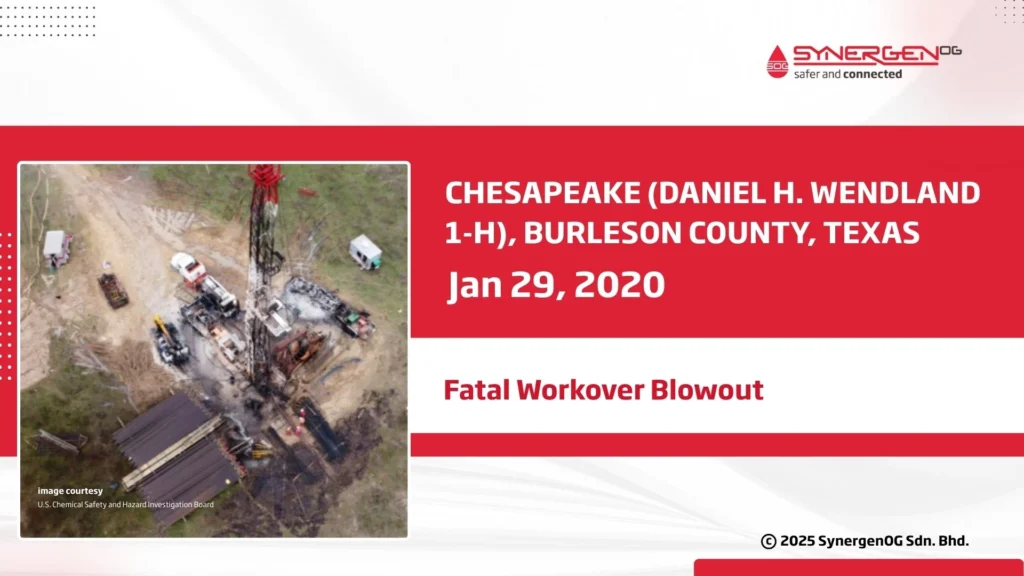
What happened: During a workover, a blowout occurred; hydrocarbons ignited, killing three workers and seriously injuring another.
Where HAZID fell short: The CSB concluded the operator failed to provide effective well-control guidance and did not include feasible hydrostatic barrier methods in policy. In simple, risk identification and planning for barriers were incomplete. A PSM-like approach to HAZID for onshore wells likely would have forced evaluation of alternate barriers, procedures, and triggers.
What HAZID should have caught:
- Barrier analysis for kill fluids and continuous additions vs. batch brine, with decision criteria.
- Ignition source control during live well interventions.
- Competency & supervision requirements tied to well complexity and risk.
Core Insight: Apply PHA discipline to well interventions, with explicit barrier philosophies and go/no-go criteria.
6) LG Polymers, Visakhapatnam, India (May 7, 2020) — Styrene Vapor Release with Offsite Harm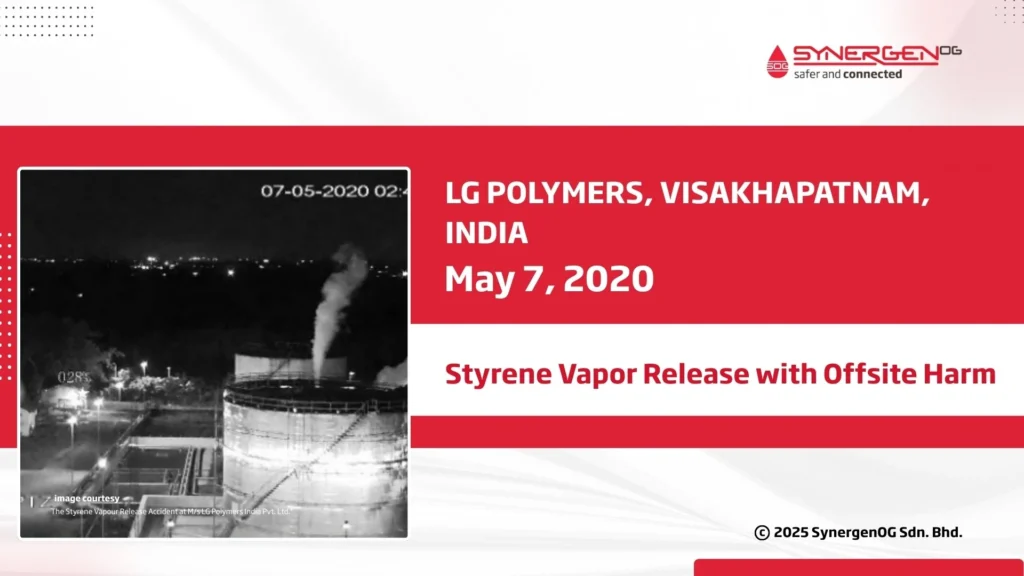
What happened: A large styrene release from storage tanks during pandemic-related restart preparations caused mass casualties and widespread exposure.
Where HAZID fell short: Official committee reviews and technical analysis point to insufficient hazard identification around inhibitor degradation, temperature rise, and storage duration; HAZOP, Risk Assessment, and emergency planning were not strong enough to prevent or mitigate the runaway.
What HAZID should have caught:
- Runaway and polymerization hazards in monomer storage, especially after long idle periods.
- Inhibitor management (oxygen levels, re-dosing, temperature control, recirculation).
- Restart risk assessments after extended shutdowns, with explicit inspection/condition checks.
Core Insight: For reactive monomers, storage is process—treat it with PHA rigor, especially across extended idling and restarts.
7) Freeport LNG, Quintana Island, Texas (Jun 8, 2022) — Loss of Containment → Vapor Cloud Explosion → Months-Long Outage
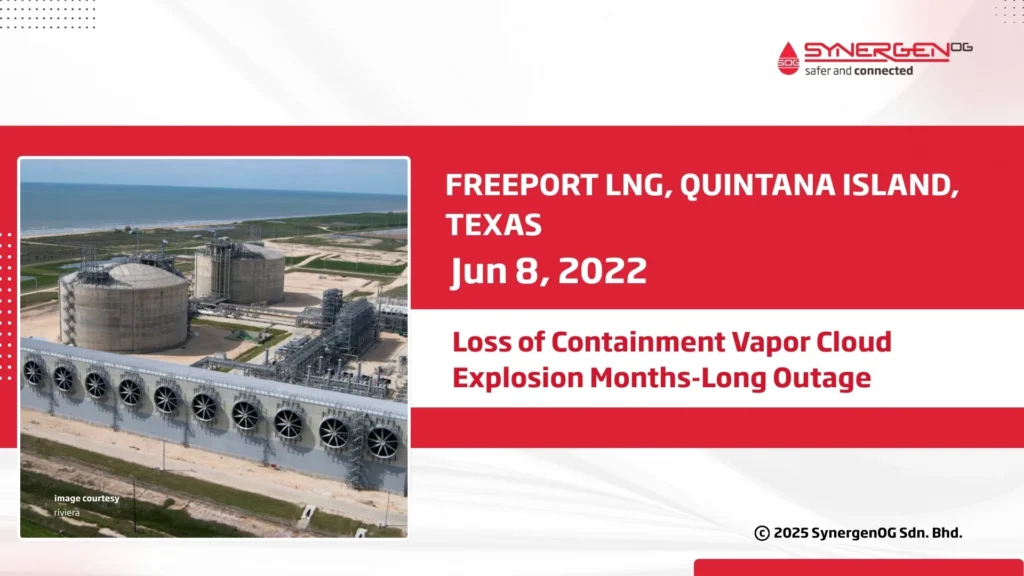
What happened: A sequence of events led to cryogenic overpressure, line failure, a gas release, and explosion, taking a major U.S. LNG exporter offline for months.
Where HAZID fell short: The PHMSA-released Root Cause Failure Analysis states the 2016 HAZOP did not evaluate certain operating modes and related consequences, so safeguards against over-pressurization were not identified. This is a textbook case of abnormal mode omission in HAZOP.
What HAZID should have caught:
- Mode-specific deviations (isolation/containment, warming, trapped LNG, vaporization) in cryogenic lines.
- Overpressure protection and detection for trapped-liquid heat-in leaks.
- Procedural controls for line-up verification and mode transitions.
Core Insight: In LNG, mode management is life-safety. HAZOP must enumerate every credible operating state (including mis-lineups) and prove hard barriers.
Cross-Industry Lessons: What “Good HAZID” Looks Like
1) Expand scope beyond steady-state
- Audit startup, shutdown, idle, cleaning, purging, maintenance, isolation like separate processes.
- For each, map energy sources, inventories, and interfaces; require barriers and proof testing.
2) Bring external hazards inside the PHA boundary
- Explicitly model floods, wildfires, extreme heat/cold, lightning, seismic, windborne debris, access cutoffs.
- Tie outcomes to layout, elevations, waterproofing, battery backup, alternate egress, and siting.
3) Treat “temporary/hidden” configurations as permanent risks
- Dead-legs, bypasses, temporary blinds/spools, jumpers: catalog them and set flush/inspection/removal
- Force MOC feedback into the PHA so the risk register stays current.
4) Design for escalation control
- Domino analysis for tank farms and terminals (common bunds, shared utilities).
- Remote isolation, fire-resistant instrumentation, and foam/water capacity verification.
5) Use barrier-based thinking tied to alarms and procedures
- For every critical scenario, define prevent/detect/mitigate layers with clear ownership, setpoints, and test intervals.
- Link procedural safeguards to hard stops/interlocks where practicable.
6) Elevate restart readiness
- After long outages, perform restart HAZOPs focused on degraded conditions (inhibitors, passivation, corrosion, fouling, mis-lineups)
Conclusion
Across geographies and sectors, the same theme appears: hazards you don’t explicitly model are the ones that hurt you. Make your next HAZID/HAZOP the moment you commit to all operating modes, all credible external events, and all temporary configurations—and then prove your barriers work. The cases above show what happens when we don’t.
Want to do a thorough HAZID & Risk Assessment Study for your facility? Enquire Now.
Looking for a HAZID Review for your facility?
